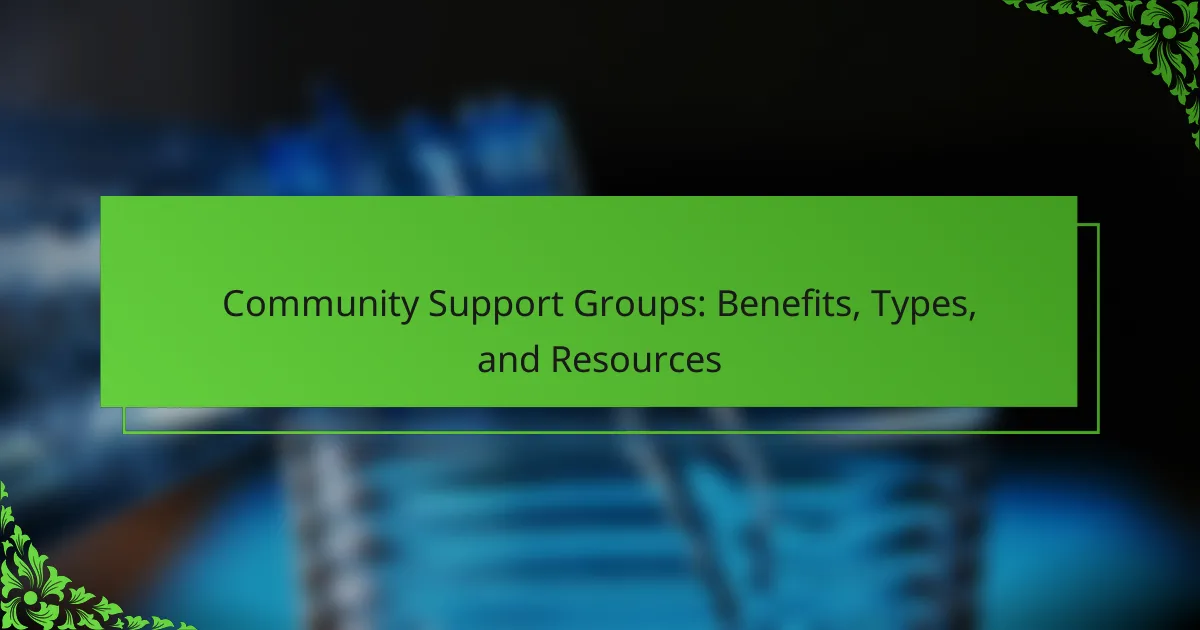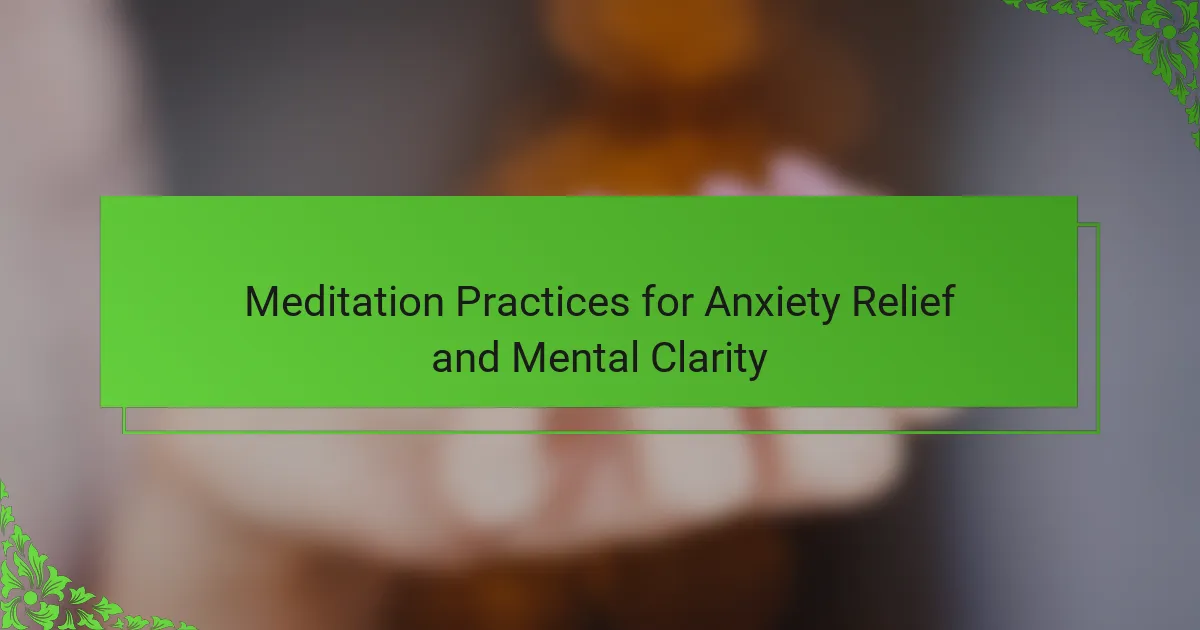Community support groups provide essential emotional, social, and practical benefits, helping individuals cope with challenges such as mental health issues, grief, addiction, and chronic illness. This article explores the various types of support groups, offers resources for finding them, and discusses the challenges they face, including cultural influences and operational hurdles. Understanding these aspects can enhance the effectiveness and accessibility of these vital community resources.
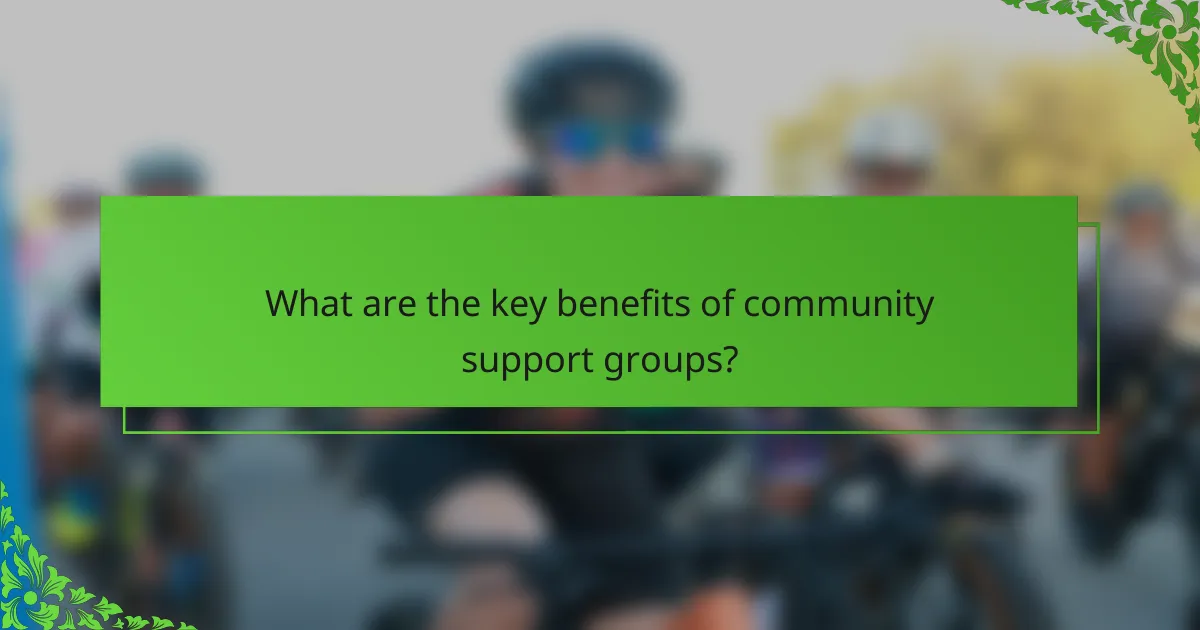
What are the key benefits of community support groups?
Community support groups offer emotional, social, and practical benefits. They foster a sense of belonging, provide shared experiences, and enhance coping strategies. Members often gain access to resources, information, and support networks. These groups can improve mental health by reducing feelings of isolation and increasing resilience.
How do community support groups foster social connections?
Community support groups foster social connections by providing a safe space for individuals to share experiences and build relationships. These groups encourage interaction through shared activities, discussions, and mutual support. Participants often find a sense of belonging, which enhances emotional well-being. Additionally, community support groups can connect members with local resources, further strengthening social ties.
Why do participants report improved mental health?
Participants report improved mental health due to the sense of belonging and emotional support found in community support groups. These groups foster connections, reduce feelings of isolation, and provide a safe space for sharing experiences. Research indicates that social support can significantly lower anxiety and depression levels. Engaging with others who understand similar struggles promotes resilience and coping strategies, enhancing overall mental well-being.
In what ways do support groups provide practical assistance?
Support groups provide practical assistance through emotional support, resource sharing, and skill-building. They create a safe space for individuals to express feelings and experiences. Members exchange information on coping strategies and local services. Additionally, workshops and activities help develop essential life skills.
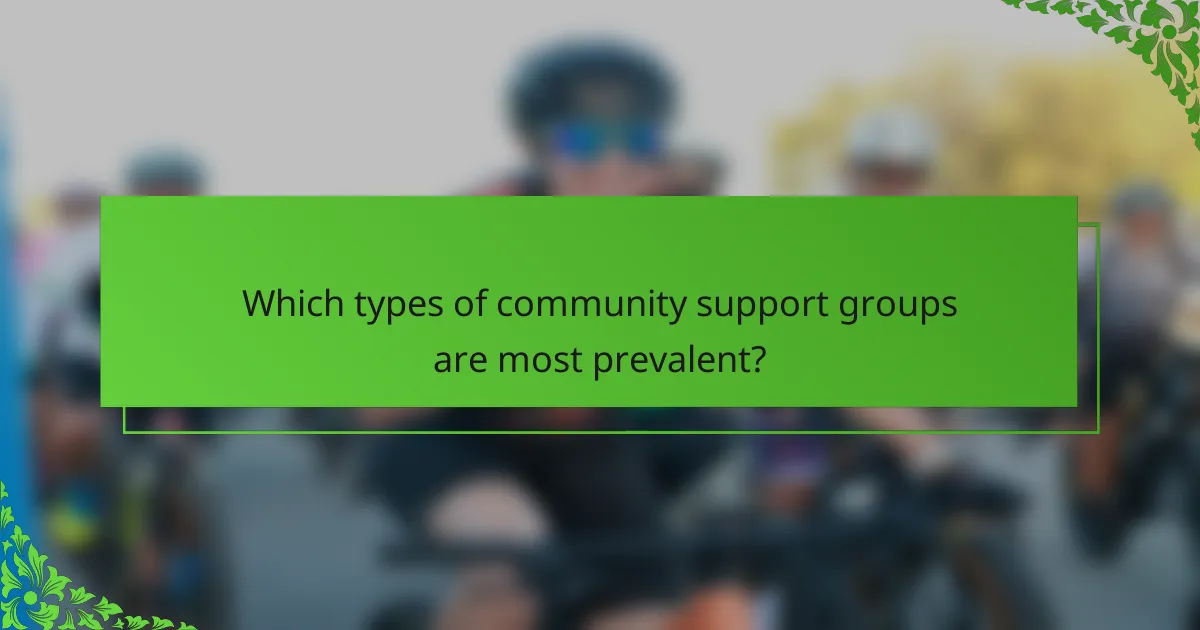
Which types of community support groups are most prevalent?
Support groups for mental health, grief, addiction, and chronic illness are the most prevalent types. These groups provide essential emotional support and resources for individuals facing similar challenges. Mental health support groups often focus on conditions like depression and anxiety, while grief support groups help individuals cope with loss. Addiction support groups, such as Alcoholics Anonymous, offer recovery pathways. Chronic illness groups provide community and information for managing long-term health issues. Each type fosters connection and understanding among participants, enhancing their coping strategies and overall well-being.
What are peer-led support groups and their impact?
Peer-led support groups are community-driven initiatives that significantly enhance emotional well-being and resilience. These groups foster connection and understanding among participants, creating a safe space for shared experiences.
Research shows that individuals engaged in peer-led support report increased self-esteem and reduced feelings of isolation. This is particularly impactful for those facing challenges such as mental health issues or chronic illnesses.
Unique attributes of these groups include their accessibility and the relatability of peer leaders, who often share similar experiences. This shared understanding can lead to more effective coping strategies and support mechanisms.
As a result, peer-led support groups contribute to stronger community ties and promote overall mental health, making them valuable resources in various settings.
How do professional-led support groups differ in structure?
Professional-led support groups typically have a structured format that includes a facilitator guiding discussions and activities. This structure fosters a safe environment, enhances engagement, and ensures that all participants have the opportunity to share. Unlike peer-led groups, which rely on shared experiences, professional-led groups often incorporate evidence-based practices and tailored interventions to address specific needs. This unique approach can lead to improved outcomes for participants seeking targeted support.
What role do online support groups play in accessibility?
Online support groups enhance accessibility by providing a platform for individuals to share experiences and resources. They foster connection and understanding, especially for those facing similar challenges. These groups often operate 24/7, allowing participants to engage at their convenience, which is crucial for those with mobility or transportation issues. Additionally, anonymity can encourage participation from individuals who might feel uncomfortable in traditional settings. The diversity of online formats—forums, social media groups, and video calls—cater to varying preferences and needs, making support more inclusive.
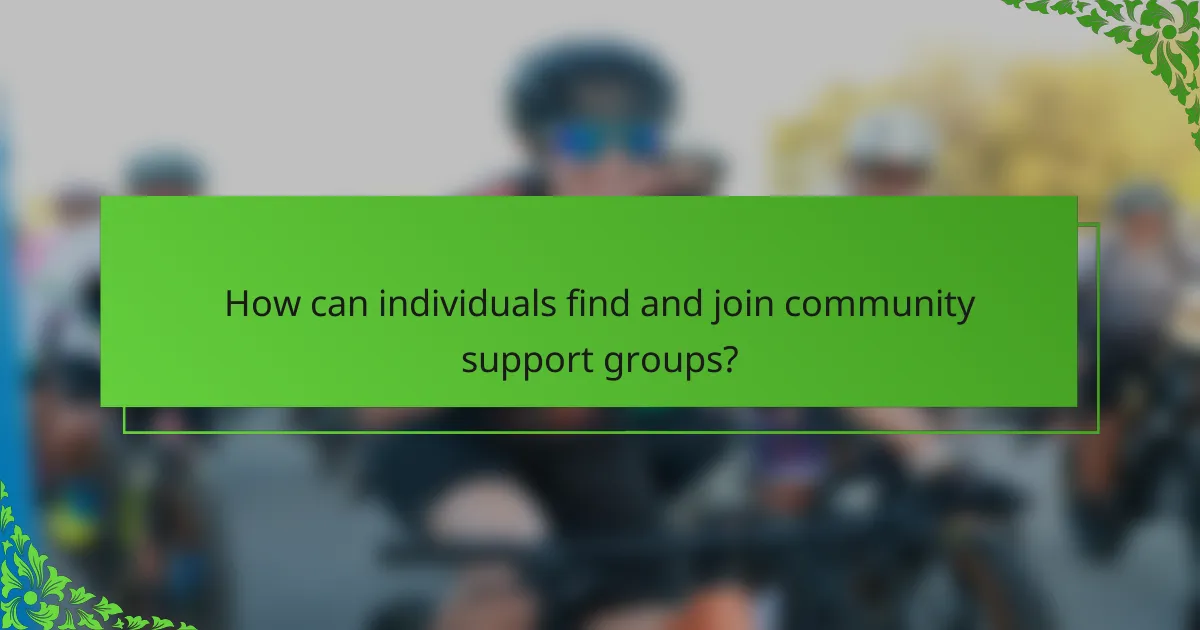
How can individuals find and join community support groups?
Individuals can find and join community support groups by researching local organizations, utilizing online platforms, or seeking recommendations from healthcare providers. Many community centers and hospitals offer listings of support groups. Online resources like social media and dedicated websites can also connect individuals with relevant groups. Attending introductory meetings can help in assessing fit and comfort.
What resources are available for locating local support groups?
Local support groups can be located through various resources. Community centers often host listings of local groups. Online directories, such as MentalHealth.gov, provide searchable databases. Social media platforms may feature community pages or groups. Local hospitals and healthcare providers frequently offer information on support services. Additionally, nonprofit organizations often maintain resources for specific issues.
How can social media platforms facilitate group connections?
Social media platforms enhance group connections by providing accessible spaces for interaction and support. They facilitate communication through instant messaging, forums, and live discussions. Users can share experiences, resources, and advice, fostering a sense of community. Additionally, platforms allow for diverse group types, including interest-based, mental health, and hobby groups, catering to various needs. These connections can lead to improved emotional well-being and a stronger support network.
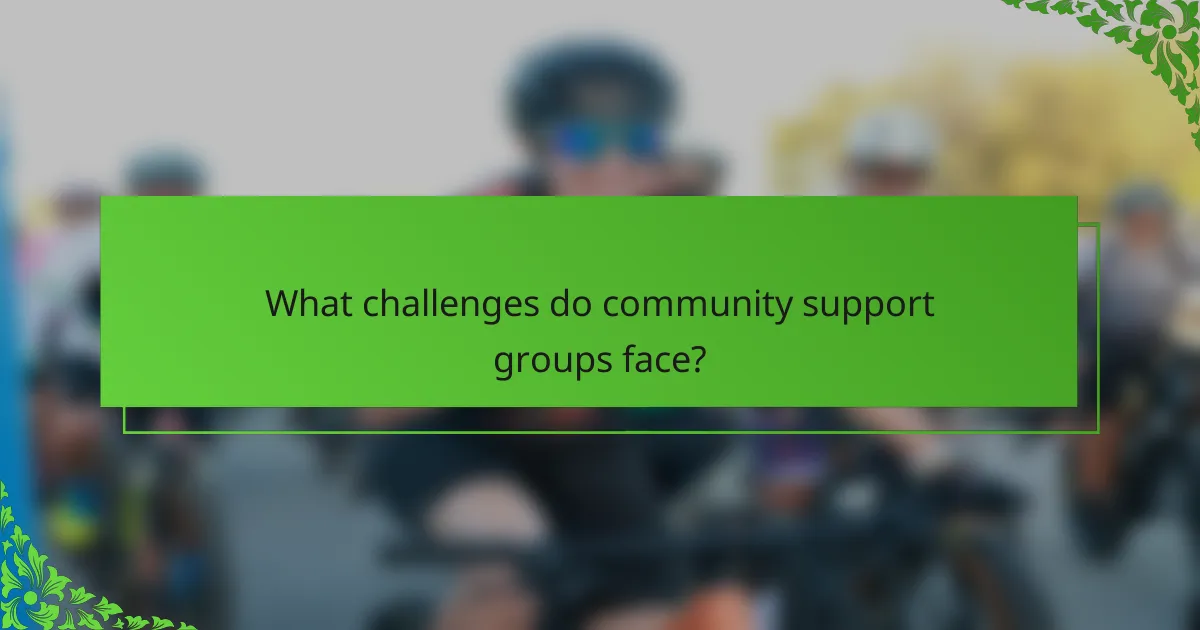
What challenges do community support groups face?
Community support groups face challenges such as funding shortages, volunteer retention, and varying member engagement. These issues can hinder their ability to provide consistent support and resources. Additionally, navigating bureaucracy and maintaining communication among diverse members can complicate operations. Addressing these challenges is essential for enhancing group effectiveness and sustainability.
How do stigma and misconceptions affect group participation?
Stigma and misconceptions significantly hinder group participation by creating barriers to trust and openness. Individuals may fear judgment or misunderstanding, leading to reduced engagement. This reluctance diminishes the potential benefits of community support groups, which thrive on shared experiences and mutual support. Addressing these issues through education and awareness can enhance participation and foster a more inclusive environment.
What are common logistical issues for support group organizers?
Common logistical issues for support group organizers include venue availability, participant engagement, resource allocation, scheduling conflicts, and communication barriers. These challenges can hinder the effectiveness and sustainability of community support groups. Addressing these issues requires careful planning and coordination.
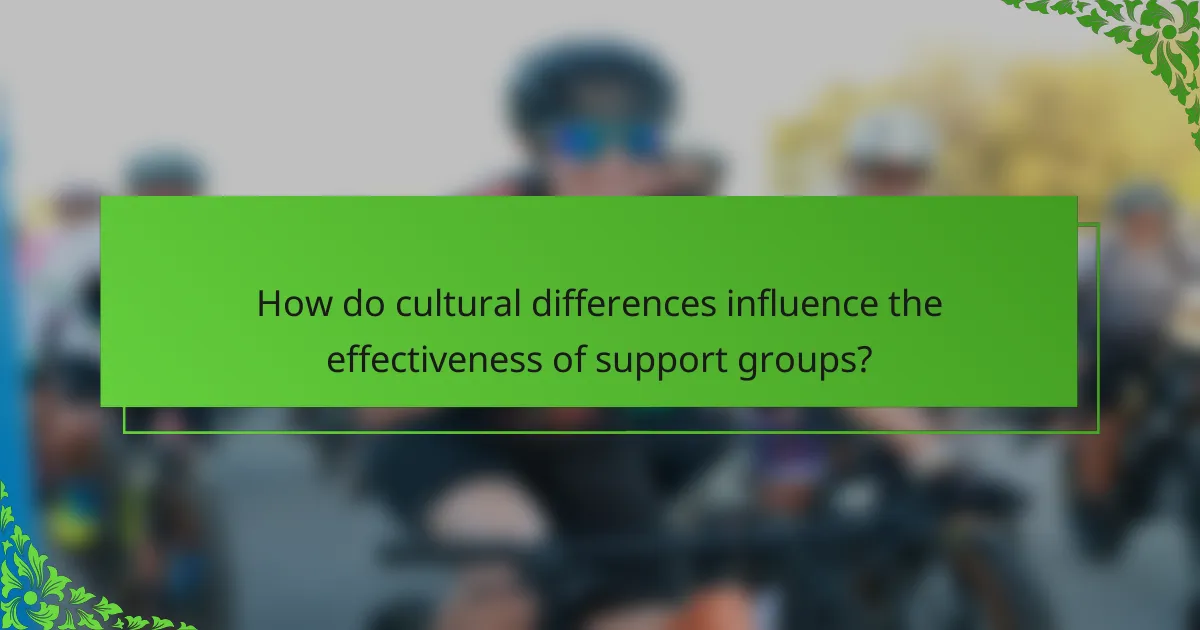
How do cultural differences influence the effectiveness of support groups?
Cultural differences significantly influence the effectiveness of support groups by shaping communication styles, emotional expressions, and group dynamics. Diverse cultural backgrounds can enhance empathy and understanding, yet may also lead to misunderstandings or conflicts.
For instance, collectivist cultures may prioritize group harmony, affecting participation levels and conflict resolution. In contrast, individualistic cultures might encourage open expression of personal issues but could overlook communal support aspects.
Awareness of these cultural nuances can improve group facilitation and promote inclusivity, ensuring that all members feel valued and understood. Ultimately, tailoring approaches to accommodate cultural differences enhances the overall effectiveness of community support groups.
What unique attributes do community support groups have in diverse populations?
Community support groups in diverse populations have unique attributes that enhance their effectiveness. These groups often foster cultural sensitivity, ensuring that members feel understood and valued. They provide tailored resources that address specific community needs, such as language support and culturally relevant materials. Additionally, they create safe spaces for sharing experiences, which can lead to stronger social bonds and collective empowerment. These attributes contribute to a more inclusive environment, promoting mental well-being and resilience among participants.
How can support groups adapt to meet the needs of specific communities?
Support groups can adapt by tailoring their services to the unique needs of specific communities. This includes understanding cultural backgrounds, addressing language barriers, and incorporating community-specific issues into discussions. They can also create targeted outreach programs to engage members effectively. Additionally, utilizing technology allows for virtual meetings, making support accessible to those unable to attend in person. Collaboration with local organizations ensures that resources are relevant and supportive.

What are some best practices for running successful support groups?
Successful support groups require clear objectives, skilled facilitators, and a safe environment for sharing. Establish ground rules to ensure respect and confidentiality. Regularly evaluate group dynamics to foster trust and engagement. Utilize diverse resources to address various needs, such as guest speakers or educational materials.
How can facilitators create a safe and inclusive environment?
Facilitators can create a safe and inclusive environment by establishing clear guidelines and fostering open communication. Encouraging participation from all members promotes a sense of belonging. Incorporating diverse perspectives enhances group dynamics and supports mutual respect. Regular feedback ensures continuous improvement in group interactions.
What techniques enhance group engagement and participation?
Techniques that enhance group engagement and participation include interactive activities, clear communication, and fostering a supportive environment. Incorporating icebreakers can break down barriers, while regular feedback encourages continuous improvement. Utilizing technology, like online forums, can also facilitate discussions and keep members connected.
What common mistakes should organizers avoid?
Organizers should avoid common mistakes such as lack of clear goals, insufficient outreach, ignoring member feedback, and inadequate resource allocation. These errors can hinder the effectiveness of community support groups. Prioritizing communication, setting measurable objectives, and fostering inclusivity can enhance group success.
